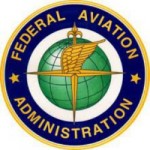The Federal Aviation Administration (FAA) is in danger of missing a Congressionally mandated deadline for expanding the use of non military UAS in the U.S., according to a report that was conducted by the Department of Transportation’s Inspector General.
DOT Inspector General Calvin Scovel III said in the report that the FAA “is significantly behind schedule in meeting most of the [unmanned aerial systems] UAS-related provisions of the [2012] FAA Modernization and Reform Act.”
Scovel said the result of the delays is that the FAA is likely to miss the 2015 deadline set by Congress for the agency to approve the expansion of U.S. drone use.
The FAA has been testing the interaction between drones and other types of commercial and private airplanes at multiple sites across the country.
The agency is facing increased pressure to approve the use of drones quickly because online companies such as Amazon have said they can be used to speed up delivery times.
The FAA recently approved a commercial drone flight, but the agency has previously shut down operations by groups such as the Washington Nationals baseball team and a Minnesota beer company.
Scovell said the FAA was behind schedule on an “August 2014 milestone for issuing a final rule on small UAS operations,” despite the testing.
“FAA has completed 9 of the act’s 17 UAS provisions, such as selecting 6 test sites, publishing a UAS Roadmap, 3 and developing a comprehensive plan outlining FAA’s UAS plans in the near- and long-term,” the report says. “However, the agency missed the statutory milestones for most of these provisions, and much work remains to fully implement them.
“FAA is also behind schedule in implementing the remaining eight UAS provisions,” Scovell continued, citing the August deadline.
“FAA’s delays are due to unresolved technological, regulatory, and privacy issues which will prevent FAA from meeting Congress’ September 30, 2015, deadline for achieving safe UAS integration. As a result, while it is certain that FAA will accommodate UAS operations at limited locations, it is uncertain when and if full integration of UAS into the NAS will occur.”


Meanwhile, a potentially lucrative and useful industry is dying on the vine because of the continued inefficiency of “our” legislators. Case in point: I had been asked to record videos of Realty for use as a marketing tool, flew a few times well below the 400′ ceiling, practiced flying under and around trees, over water and around a house while not intruding on the airspace around neighboring homes, only to find out that I cannot “profit” from my work. I have also been approached to fly GPS coordinates over crops and watersheds to help a farmer assess his conditions after recent flooding. I will be doing this as a favor for free, but that does nothing to encourage the release of potential for an industry. Perhaps empowering and embracing the hobbyists that the industry sneers at would move things along. Collision avoidance – easy – Telemetry – easy – First Person Video – easy – GPS Flight Plans – easy – I can only assume that the industry wants to regulate the little guy out of their profit margins and is therefore more willing to wait. Nobody wants to be undercut by a hobbyist that can do the same thing cheaper. Where is the market for their devices coming from if they can’t be flown in the US, anyway?
I am in the same boat and have invested a lot of money in not so hobbyist equipment. I have a small production company and was approached to shoot low altitude scenes so I invested in a Cinestar 8 and a DJI S800.. These aren’t for the beginning hobbyist but I am in the same boat with everyone else.
You wanted to know where the market was in the US. Its here, illegally though. The manufacturers are selling cause the FAA hasn’t made the sale or ownership of them illegal so people like you and I have invested time and money only to find out we are waiting on the eventual catchup that the US will have to do. Mr. Huerta, Administrator of the FAA is narrow minded if he thinks that he can keep this from happening. As long as there is a Federal Judge that is helping the hobbyist pilots from the fear mongering of Mr. Huerta, we have a chance. Just have faith, the small guy will win.